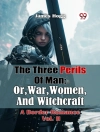In ‚Wacousta: A Tale of the Pontiac Conspiracy, ‚ Major Richardson weaves a vivid narrative set against the backdrop of the tumultuous 18th-century struggle between Native Americans and European colonizers. The novel employs rich, descriptive prose and a dramatic tone to explore themes of identity, power, and loyalty, showcasing the complexities of cross-cultural interactions. Its historical context is deeply rooted in the events surrounding Pontiac’s Rebellion, offering readers an insightful glimpse into a pivotal moment in North American history. Richardson’s use of characters and their moral dilemmas invites reflection on the themes of colonization, betrayal, and the quest for autonomy, making this work a seminal piece in the canon of Canadian literature. Major Richardson, a soldier and author, brings his military experience and profound understanding of the conflicts between Native Americans and settlers to his storytelling. His first-hand experiences during the colonial wars and a keen interest in the intricate relationships between the two cultures inform the narrative. His dedication to portraying the indigenous perspective with empathy and respect sets his work apart, as he endeavors to capture the spirit of an era fraught with tension. Readers seeking a compelling narrative that intertwines historical events with human emotion will find ‚Wacousta‘ a captivating exploration of a lesser-known but significant chapter in North American history. Richardson’s portrayal of the Pontiac conspiracy not only entertains but also educates, making this novel an essential read for anyone interested in understanding the complexities of colonial relationships.
Über den Autor
Major John Richardson (1796-1852) was a Canadian writer and one of the earliest figures in Canadian literature. An officer in the British Army, Major Richardson drew upon his military experiences to pen his most famous work, ‚Wacousta : a tale of the Pontiac conspiracy (Complete)‘, published in 1832. This historical novel is set during the Pontiac’s War of 1763-1766 and intertwines themes of treachery, colonialism, and revenge against the backdrop of the Great Lakes region’s conflict. Richardson’s style is often characterized by a gothic and romantic sensibility, intense emotion, and a vivid portrayal of the Canadian wilderness, which was largely unknown to his contemporary readership. In ‚Wacousta‘, Richardson captured the political complexities of the time and the nuanced relationships between indigenous peoples and European settlers with a level of detail that showcased his intimate knowledge of military life and the intricacies of colonial encounters. His narrative ability made him a significant figure in the beginnings of distinctly Canadian literature, distinguishing him from other writers of his era. His contributions have been recognized for their historical value and their role in shaping the themes of identity and conflict in early Canadian narrative forms.












